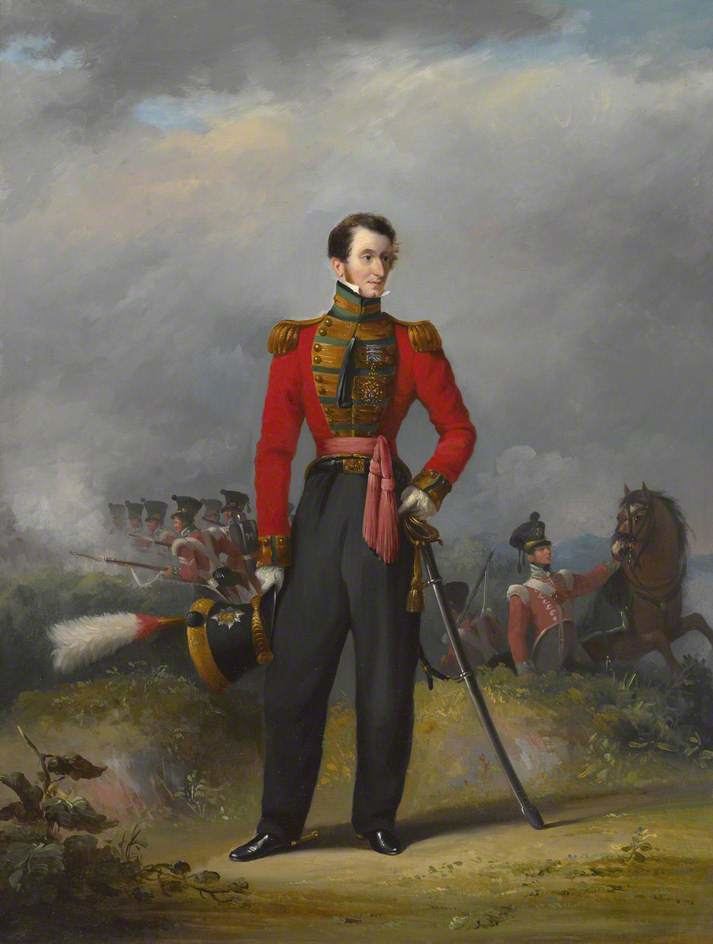Size One battalion | Branch Army Role Infantry | |
 | ||
Active 1794 to 1818, 1823 to 1881 | ||
The 94th Regiment of Foot was a British Army line infantry regiment which was originally formed in 1568 as the 'Scots Brigade' for service in the Netherlands. The regiment was brought onto the British establishment, in October 1794, as the 'Scotch Brigade', renumbered as the 94th Regiment of Foot in December 1802 and disbanded in December 1818. The regiment was reformed in December 1823 and served until 1881 when it was merged with the 88th Regiment of Foot to form the Connaught Rangers
Contents
Service history
The regiment started life in Dutch service as the 'Scots Brigade' in 1568. In 1665 the regiment took the 'Oath of Allegiance' to the Dutch states General and declined to return to Scotland. In 1794 the regiment rebelled against taking orders in the Dutch language and were taken onto the British establishment in October of that year, as the 'Scotch Brigade'.
The Scotch Brigade served in South Africa from 1796 to 1798, then transferred to India for nine years, where it was renumbered as the 94th Regiment of Foot in December 1802. They fought in the Polygar War and Mahratta Wars, losing two-thirds of the men and most of the officers. The regiment returned to Britain in 1807, arriving in Leith in May 1808.
After serving in Jersey, the 94th went to Lisbon and from there to Cadiz, in 1810, where it was distinguished at the sanguinary defence of Fort Matagorda before joining Lord Wellington's army in the lines of Torres Vedras. 1n 1814 the regiment was posted to Ireland, where it remained through the Waterloo campaign and was disbanded on 24 December 1818.
The regiment was reformed in December 1823, in Glasgow. Of the initial appointments, two of the officers were taken from the half-pay list of the old 94th Foot (captain and ensign) and two had previous service in the 94th Foot (major and captain).
Following their reformation the regiment served in a variety of settings during the colonial period. In 1824 the regiment was posted to Gibraltar where it was presented with its new regimental colours, before returning to Ireland.
In 1838 the regiment was posted to Ceylon to relieve the 58th Regiment, then moved to Madras the year after and served in that Presidency for fifteen years, during which time it had some action in the Mappila riots.
In 1854, the regiment supplied volunteers to some units in the Crimean war, whilst service companies served in Gibraltar from September 1855, to June 1856. In October, 1857, the 94th was ordered to Karachi, whence it was afterwards transferred to Peshawar in the North-West Frontier region and in other parts of India and Aden, in the Yemen, until 1868.
On 26 May 1874 the Battle Honours and Distinctions of the old 94th were granted to the regiment. The following year, in 1875, the regiment adopted the diced band to their shako (the distinguishing mark of Lowland Scottish regiments) and was allowed to revive the Elephant and the Indian and Peninsular honours of the old 'Scotch Brigade'.
In 1879 the regiment fought in the Zulu War and at its conclusion marched into the Transvaal and took part in the successful attack on Sekhukhune’s stronghold on 28 November 1879. In 1880 the eight companies of the 94th regiment were widely distributed throughout the Transvaal, garrisons being established in Pretoria (E and G companies), Lydenburg (A and F companies), Wakkerstroom (C company), Marabastad (B company), Standerton (H company) and Newcastle in northern Natal (D company). It was during the re-concentration of the companies in December 1880, in response to outbreaks of civil disorder by the Boers that A and F companies were attacked at Bronkhorstspruit in the opening clash of the First Boer War. The 94th lost four officers (Lt.Col. Philip Robert Anstruther, Captain Stanford Norman McLeod Nairne, Captain James MacSwiney, Lieutenant Herbert Augustine Christopher Harrison) and 71 men. One officer and 105 men became prisoners of the Boers. The other six companies of the regiment spent the war besieged by the Boers; C, D and H in Standerton, E and G in Pretoria, B in Marabastad, and a small detachment of 50 men in Lydenburg. The following year, in 1881, as part of the Childers Reforms the 94th amalgamated with the 88th Regiment of Foot to become the 2nd battalion the Connaught Rangers.
Battle honours
Battle honours won by the regiment were:
Colonels of the Regiment
Colonels of the Regiment were:
Other 94th Regiments of Foot
Several other Regiment of Foot have been numbered 94th:
